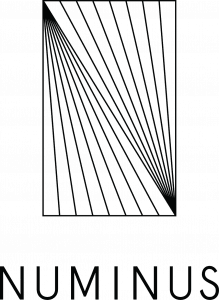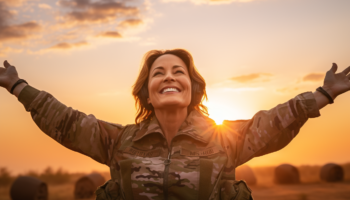
Welcome to the third installment in our three-part series on ketamine therapy, sponsored by Numinus, an official partner of Third Wave.
Disclaimer: Psychedelics are largely illegal substances, and we do not encourage or condone their use where it is against the law. However, we accept that illicit drug use occurs and believe that offering responsible harm reduction information is imperative to keeping people safe. For that reason, this document is designed to enhance the safety of those who decide to use these substances.
This article has been medically reviewed byKatrina Oliveros, MSN-ED, BSN
Maria Katrina, is a trauma-informed Wellness Educator and Psychedelic Harm Reduction Consultant. Beyond nursing, she supports health & wellness teams through medical aid, psychedelic harm reduction, and integration services.
Imagine depression.
You feel chronically stressed and unable to motivate yourself to do simple tasks or absorb new information.
Maybe you’ve been living in a fog of low self-worth for decades, making it even harder to seek help. If you do, you find out the standard medical treatment for your condition must be taken multiple times a day and takes four to 12 weeks to kick in – if it works at all.
In the meantime, you keep struggling with suicidal ideation, longing for a solution like ketamine to replace antidepressants and improve your life.
Now, imagine a ketamine treatment plan.
A temporary weekly regimen of this medication can improve depression symptoms within 72 hours and lasts weeks in two-thirds of patients, compared to 40-60% for leading antidepressants.
At higher doses, it numbs your body and restores neuroplasticity, freeing you to transcend chronic stressors, overcome past traumas, rewrite limiting beliefs, and find greater spiritual purpose.
In the best outcomes, this medicine reduces addictive behaviors and fear of death while increasing compassion and the joy of living.
What is Ketamine?

Ketamine is a dissociative anesthetic with psychedelic effects, first synthesized in 1963 as a safer alternative to PCP.
In the following decades, it was widely used as an anesthetic for humans and animals before surgery and as an underground recreational drug. In 2000, a Yale University study documented ketamine’s potent effects as an antidepressant.
Since then, the US Food and Drug Administration (FDA) has twice declared ketamine a breakthrough therapy above existing options for treatment-resistant depression (TRD).
Though psilocybin mushrooms may earn more attention, ketamine quietly leads the pack to medicalize previously illicit mind-altering substances, claimed to represent the most significant advance in mood disorder research since the traditional antidepressant medications like Prozac in the ’80s.
How Does Ketamine Work?

Ketamine’s rapid antidepressant effects target an excitatory neurotransmitter called glutamate, whose importance to memory, cognition, and mood regulation science is just beginning to understand.
Since the Yale University study in 2000 blew the doors open, the research has multiplied to document glutamate’s role in restoring the neuroplasticity essential for improving mood and cognition, repairing chronic stress, and even reversing learned helplessness in lab rats.
Ketamine also impacts our opioid receptors, the hippocampus, and other prefrontal cortex areas involved in explicit or conscious memory.
Now known as our body’s most common chemical messenger, most cells throughout the central nervous system contain several types of receptors for glutamate. By antagonistically binding with the NMDA (N-methyl-D-aspartate) glutamate receptors, ketamine stops signals between the brain and spinal column, resulting in pain reduction and, at higher doses, disembodied experiences. Users report feelings of weightlessness, tingling, and euphoria, corresponding to increased conceptual thinking and visualizations.
The catch is that other NMDA antagonists haven’t worked the same to alleviate depressive symptoms, so research is ongoing to understand the finer chemical details of ketamine’s antidepressant effects. Notably, physical and mindfulness exercises facilitate glutamate reception to similar mood-boosting results.
The Benefits of Ketamine Versus SSRIs

Traditional antidepressants describe a drug class typified by Prozac and other brands in the 1980s known as selective serotonin reuptake inhibitors, or SSRIs.
While SSRIs take weeks of daily dosing before taking effect, ketamine has the ability to provide fast, long-lasting relief for depressive symptoms for up to 30 days from a single intranasal dose.
In addition, only about 45% of patients achieve lasting success with SSRIs, and about one-third are chronically resistant to treatment. Compare that to estimates of ketamine reducing symptoms by a metric of about 50% in 60 to 85% of subjects in some studies, providing rapid and sustained relief from both MDD and bipolar disorder (BPD).
Perhaps most exciting is ketamine therapy pairing ketamine treatments with psychotherapy to enact lasting change without promoting dependence on a daily pill, currently offered by companies like Numinus. This mental health care model focuses on using mood-altering drugs not as ongoing magic bullets to numb emotional disturbance but as concentrated windows to kickstart a holistic healing process.
Some research aims to convert ketamine into nonpsychoactive preparations. In contrast, others argue the psychedelic effects of ketamine may be crucial to its efficacy, offering a conscious window to rewrite beliefs and overcome addiction and traumatic stressors. Numinus’s Chief Clinical Officer Reid Robinson summarized this outlook in an interview with the Psychiatric Times as follows:
“With appropriate preparation and dosing, ketamine can bring about a unique experience of time, space and form, one that transcends ordinary consciousness to a state where the mind feels liberated from its usual constraints, ruminations and pre-occupations. In this non-ordinary state of consciousness, the client has the opportunity to think and feel differently. They may more easily revisit past traumas and be better able to actively participate in the work that healing requires.”

Can You Use Ketamine to Replace Antidepressants?

It depends. There’s been a clear need for new strategies to address the mental health crisis since the postwar era of “better living through chemistry” – providing new classes of drugs every decade with better results and fewer side effects for more people – dried up in the 1990s.
Ketamine to replace antidepressants shows particular promise to promote lasting healing when paired with psychotherapy and mindfulness exercises.
Despite its proven efficacy over current prescriptions for Major Depressive Disorder (MDD), ketamine is no cure-all. So far, clinical trials and conventional medicine treat it as a last resort after other depression treatments have failed.
Still, there are strong arguments for increasing access to ketamine much earlier to relieve the suffering and improve positive outcomes not only for depressed patients but also those with PTSD, OCD, eating disorders, and addictions.
Method of Ketamine Delivery & Access

One can take ketamine in intravenous, intramuscular, oral, nasal, subcutaneous, sublingual, and rectal forms.
Ketamine is most bioavailable in intramuscular and intravenous ketamine infusions, showing lasting antidepressant effects within 2 hours, but these also tend to be inconvenient and expensive. The average effective single dose of ketamine in clinical trials ranges from 0.5mg – 1.0mg/kg.
There have long been other methods of administration, not only in private or illicit use of ketamine but in the hundreds of clinics providing off-label ketamine therapy since at least 2018.
In 2019, Johnson & Johnson released the first FDA-approved Ketamine-derived treatment for depression, an intranasal spray under the brand name Spravato, administered to patients at a doctor’s office from once every two weeks to three times a week. Ketamine is also available intravenously under the brand name Ketalar.
Risks of Ketamine
Most undesirable side effects of ketamine result from long-term exposure.
These include schizotypal paranoia and delusions, nausea, memory loss, dissociation, insomnia, bladder dysfunction, and higher intracranial and blood pressure.
For these reasons, clinics screen treatment for those with existing cardiovascular problems, brain lesions, or a history of psychosis.
The risk of overdose is low and almost always results from pairing with other substances. Nevertheless, there is a moderate abuse potential if taken regularly or to excess, which is why many providers use it as a bridge to additional mental health strategies.
Researchers advocate for pinpointing biomarkers to help distinguish between who will and won’t respond positively to ketamine therapy. When administered responsibly, however, ketamine can have anti-addictive properties, especially when complemented by strategies that keep glutamate release going in more diverse everyday ways.
Final Thoughts…
While the research to understand ketamine’s causal chemical mechanisms and identifiers for at-risk populations continues, ketamine is out there in well-documented, accessible, and diverse ways, reflecting its place in the scientific literature as one of the most promising medicines discovered by psychiatry in recent decades.
Its impacts and visibility seem sure to multiply as time goes on, and understanding evolves, with ample reason to believe ketamine may save the lives of many suffering from major depression, suicidal thoughts, and other illnesses.
And if you’re interested in combining ketamine with psychotherapy to help with long-lasting relief of depressive symptoms, Numinus offers the latest advances in psychedelic medicine with a holistic, integrated approach to healing.
References
Tersavich, Chelsea. “Can I Use Ketamine Treatment to Replace Psychiatric Medications?” Mindbloom, https://www.mindbloom.com/blog/use-ketamine-treatment-to-stop-using-ssri-snri-maoi-medications
Kritzer, M., Mischel, N., Young, J., et. al. “Ketamine for treatment of mood disorders and suicidality: A narrative review of recent progress.” Ann Clin Psychiatry, 2022 Feb; 34(1): 33–43. doi: 10.12788/acp.0048
InformedHealth.org [Internet]. Cologne, Germany: Institute for Quality and Efficiency in Health Care (IQWiG); 2006-. “Depression: How effective are antidepressants?” [Updated 2020 Jun 18]. Available from: https://www.ncbi.nlm.nih.gov/books/NBK361016/
Marcus, David J. & Bruchas, Michael R. “Antidepressants: Where ketamine and dopamine collide.” eLife, https://elifesciences.org/articles/70148.
Fava, M., Freeman, M.P., Flynn, M. et al. “Double-blind, placebo-controlled, dose-ranging trial of intravenous ketamine as adjunctive therapy in treatment-resistant depression (TRD).” Mol Psychiatry 25, 1592–1603 (2020). https://doi.org/10.1038/s41380-018-0256-5.
Bottemanne H, Morlaas O, Claret A, Sharot T, Fossati P, Schmidt L. “Evaluation of Early Ketamine Effects on Belief-Updating Biases in Patients With Treatment-Resistant Depression.” JAMA Psychiatry, https://jamanetwork.com/journals/jamapsychiatry/fullarticle/2796906.
Berman, R M et al. “Antidepressant effects of ketamine in depressed patients.” Biological psychiatry vol. 47,4 (2000): 351-4. doi:10.1016/s0006-3223(99)00230-9.
“FDA approves new nasal spray medication for treatment-resistant depression; available only at a certified doctor’s office or clinic.” U.S. Food and Drug Administration, 05 Mar. 2019. Press release.
Pal, Mia Michaela. “Glutamate: The Master Neurotransmitter and Its Implications in Chronic Stress and Mood Disorders.” Frontiers in human neuroscience vol. 15 722323. 29 Oct. 2021, doi:10.3389/fnhum.2021.722323.
Carreno, Flavia R et al. “Selective Pharmacological Augmentation of Hippocampal Activity Produces a Sustained Antidepressant-Like Response without Abuse-Related or Psychotomimetic Effects.” The international journal of neuropsychopharmacology vol. 20,6 (2017): 504-509. doi:10.1093/ijnp/pyx003.
Mandal, Suprio et al. “Efficacy of ketamine therapy in the treatment of depression.” Indian journal of psychiatry vol. 61,5 (2019): 480-485. doi:10.4103/psychiatry.IndianJPsychiatry_484_18.







